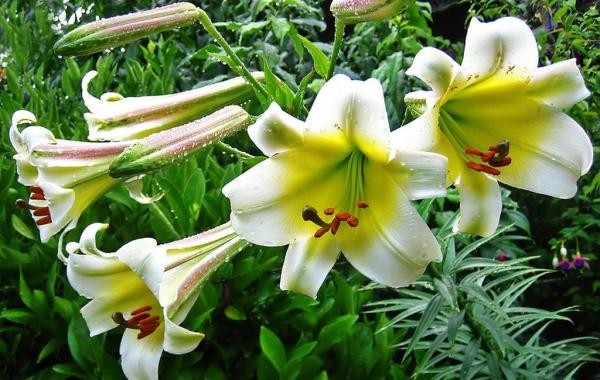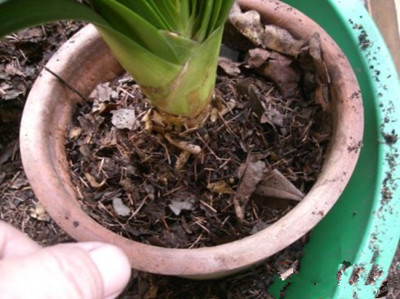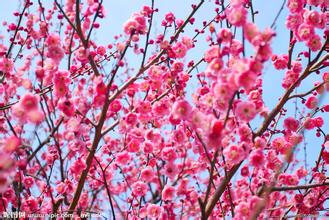Management method of potted flower rainy season
Prevent stagnant water. Pots placed in the open world are easy to accumulate water after rain. if they are not eliminated in time, the water in the pot soil will form a saturated state, resulting in insufficient air and serious hypoxia, which is extremely disadvantageous to the root growth of flowers. In particular, some varieties that are more afraid of waterlogging, such as cactus, Dahlia, crane orchid, gentleman orchid, evergreen, four seasons crabapple, asparagus, camellia, sweet-scented osmanthus, chrysanthemum and so on, can be slightly dumped before rain without hindering their growth. Varieties that are not too afraid of waterlogging can pour stagnant water out of the basin after showers. If you suffer from waterlogging, you should first put the pot plants in a shady place to avoid direct sunlight. After it is restored, it will gradually move to the appropriate point for normal management.
Protect against rain and rain. Some flowers, such as begonia, Admiralty, cyclamen, paulownia, African chrysanthemum and so on, go into dormancy or semi-dormancy in summer, and the basin soil should not be overheated; some foliage or flower buds are very sensitive to moisture, and the leaves cannot accumulate water. if they are often drenched by rain, they are easy to rot and lose their leaves, so they should be placed in a shelter or properly sheltered when it rains.
Third, prevent lodging. -some tall plants or varieties with hollow and crisp stems, such as dahlias, chrysanthemums, gladiolus, evening fragrant jade, are easy to break in the event of a storm. therefore, the pot plants should be moved to shelter before the heavy rain, and brackets should be set up in advance to tie and fix the flower branches.
Fourth, guard against the wind. Because of the high temperature and high air temperature in the rainy season, if the ventilation is poor, the plant is very vulnerable to diseases and insect pests, and it is also easy to delay flowering and affect the pollination results. Therefore, it is necessary to strengthen ventilation. If it is found that flowers suffer from aphids, red spiders or diseases and insect pests such as powdery mildew and black spot, ventilation measures should be taken in time and appropriate methods should be used to control them.
Fifth, prevent warm heat. In case of a storm in hot weather, it is best to water it with clear water once after the weather is fine to adjust the temperature of the surface soil and air and reduce the adverse effects of damp and heat on plants.
Sixth, guard against apprenticeship. The high air temperature in the rainy season, coupled with the poor light on cloudy days, often results in the overgrowth of potted flower branches and leaves. Therefore, for some herbs and flowers, the number of watering times and the amount of water (commonly known as buckling water) can be controlled to make the branches strong.

Potted flowers rainy season management one, prevent stagnant water. Pots placed in the open world are easy to accumulate water after rain. if they are not eliminated in time, the water in the pot soil will form a saturated state, resulting in insufficient air and serious hypoxia, which is extremely disadvantageous to the root growth of flowers. In particular, some varieties that are afraid of waterlogging, such as cactus, Dahlia, crane orchid, gentleman orchid, evergreen, four seasons crabapple, asparagus, camellia, sweet-scented osmanthus, chrysanthemum and so on, can be slightly dumped before rain without hindering their growth. Varieties that are generally not too afraid of waterlogging can pour stagnant water out of the basin after showers. If you suffer from waterlogging, you should first put the pot plants in a shady place to avoid direct sunlight. After it is restored, it will gradually move to the appropriate point for normal management.
Second, protect against rain. Some flowers, such as begonia, inverted golden bell, cyclamen, paulownia, African chrysanthemum and so on, go into dormancy or semi-dormancy in summer, and the basin soil shall not be overheated; some foliage or flower buds are very sensitive to moisture, and the foliar surface cannot accumulate water. if often drenched by rain, it is easy to rot roots and defoliation, so it should be placed in shelter or properly sheltered when it rains.
Third, prevent lodging. Some varieties with tall plants or hollow and crisp stems, such as dahlia, chrysanthemum, gladiolus and evening fragrant jade, are easy to lodge and break in the event of a storm. therefore, the pot plants should be moved to shelter before the heavy rain, and brackets should be set up in advance to tie and fix the flower branches.
Fourth, guard against the wind. Because of the high temperature and high air temperature in the rainy season, if the ventilation is poor, the plant is very vulnerable to diseases and insect pests, which can also lead to delayed flowering and affect the pollination results. Therefore, it is necessary to strengthen ventilation. If it is found that flowers suffer from aphids, red spiders or diseases and insect pests such as powdery mildew and black spot, ventilation measures should be taken in time and appropriate methods should be used to control them.
Fifth, prevent warm heat. When potted flowers and trees encounter storms in hot weather, it is best to water them with clear water after sunny days, so as to adjust the temperature of topsoil and air and reduce the adverse effects of damp and heat on plants.
Sixth, guard against apprenticeship. The high air temperature in the rainy season, coupled with the poor light on cloudy days, often results in the overgrowth of potted flower branches and leaves. Therefore, for some herbaceous and woody flowers, the watering times and amount of water (commonly known as buckling water) can be controlled to make the branches strong. Management of potted flowers in rainy season
Prevention of stagnant water: stagnant water in the basin after rain, if not eliminated in time, the water in the basin soil will form a state of saturation, resulting in insufficient air and serious hypoxia, which is extremely disadvantageous to the root growth of flowers, especially some varieties that are afraid of waterlogging, such as cactus, Dahlia, Wenshulan, tortoise back bamboo, evergreen, big rock tree, magnolia, orchid, asparagus, sweet-scented osmanthus, chrysanthemum and so on, which can easily cause plant wilting. The leaves are yellowed or the roots rot, and the whole plant will die in severe cases. Second, rain: some flowers, such as begonia, hanging golden bell, cyclamen, geranium, lily, etc., enter dormancy or semi-dormant state in summer, the basin soil should not be too wet, if drenched by rain, it is very easy to cause root or corm rot, causing fallen leaves. After the orchid was exposed to rain, Rain Water brought bacteria and dust to the center of the leaf, which was easy to form a focus under the condition of high temperature and poor ventilation, and the leaf began to rot from the base. Some cactus with sunken tops or fluffy and long hairs can easily cause stems and leaves to rot after rain. Therefore, when it rains, put the plant in a shelter. Third, lodging prevention: some tall plants or varieties with hollow and crisp stems, such as dahlias, chrysanthemums, gladiolus, oleander, etc., are easy to lodge and break in the event of a storm, and brackets should be set up in advance to tie and fix the branches or flower branches. Fourth, anti-nest wind: rain plum has high temperature and high air humidity, if poor ventilation, the plant is extremely vulnerable to diseases and insect pests, but also easy to lead to delayed flowering, affecting pollination results. Therefore, in case of continuous rain and excessive air humidity, it is necessary to strengthen ventilation; appropriately expand the distance of pot plants, prune some flowers, and remove over-dense branches, parallel branches, cross branches, drooping branches and overlapping branches, so as to facilitate the ventilation and light transmission of pot plants. Fifth, anti-damp heat: potted flowers and trees in hot weather in case of a storm, it is best to water with clear water after sunny, in order to adjust the surface soil and air temperature, reduce the adverse effects of hot and humid on the plant. Sixth, anti-apprentice growth: excessive air humidity in the rainy season, often make flowers grow branches and leaves, weak growth, poor flowering. Therefore, the number of watering times and the amount of water should be controlled to make the branches strong, blossom and avoid overgrowth. Seventh, pest control: wet and hot climate in the rainy season, red spiders do serious damage in insect pests, can be sprayed 800 times dicofol or 200 times acarate, or 15% aldicarb can be buried (1 gram in a 20 cm diameter flowerpot). Powdery mildew and black spot are typical of the diseases, which can be controlled by spraying 700-1000 times carbendazim and trimethoprim diluent.
- Prev

How to change the soil for the magnolia?
The method and process of changing soil for magnolia are very simple, in order to be more safe, say some points for attention, and help flower friends to do more solid homework for changing soil. 1. The time to change the soil: generally speaking, the orchid has to change the basin once a year, which is more conducive to the growth of the orchid.
- Next

How to cultivate plum blossom in family
Plum blossom, alias dried plum, spring plum, red plum, green plum and so on. Sexual preference for adequate light, warm, humid, well-ventilated environment, cold tolerance is strong, but can not withstand the low temperature below-15 degrees Celsius, not resistant to waterlogging. Avoid stagnant water, resistant to barren. Grow well in fertile, loose, humus-rich neutral or slightly acidic soil
Related
- Fuxing push coffee new agricultural production and marketing class: lack of small-scale processing plants
- Jujube rice field leisure farm deep ploughing Yilan for five years to create a space for organic food and play
- Nongyu Farm-A trial of organic papaya for brave women with advanced technology
- Four points for attention in the prevention and control of diseases and insect pests of edible fungi
- How to add nutrient solution to Edible Fungi
- Is there any good way to control edible fungus mites?
- Open Inoculation Technology of Edible Fungi
- Is there any clever way to use fertilizer for edible fungus in winter?
- What agents are used to kill the pathogens of edible fungi in the mushroom shed?
- Rapid drying of Edible Fungi

